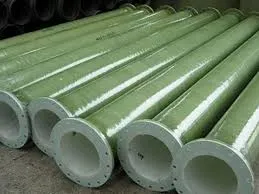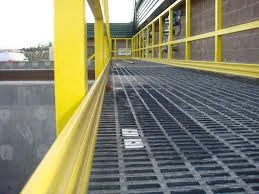
-
 Afrikaans
Afrikaans -
 Albanian
Albanian -
 Amharic
Amharic -
 Arabic
Arabic -
 Armenian
Armenian -
 Azerbaijani
Azerbaijani -
 Basque
Basque -
 Belarusian
Belarusian -
 Bengali
Bengali -
 Bosnian
Bosnian -
 Bulgarian
Bulgarian -
 Catalan
Catalan -
 Cebuano
Cebuano -
 China
China -
 China (Taiwan)
China (Taiwan) -
 Corsican
Corsican -
 Croatian
Croatian -
 Czech
Czech -
 Danish
Danish -
 Dutch
Dutch -
 English
English -
 Esperanto
Esperanto -
 Estonian
Estonian -
 Finnish
Finnish -
 French
French -
 Frisian
Frisian -
 Galician
Galician -
 Georgian
Georgian -
 German
German -
 Greek
Greek -
 Gujarati
Gujarati -
 Haitian Creole
Haitian Creole -
 hausa
hausa -
 hawaiian
hawaiian -
 Hebrew
Hebrew -
 Hindi
Hindi -
 Miao
Miao -
 Hungarian
Hungarian -
 Icelandic
Icelandic -
 igbo
igbo -
 Indonesian
Indonesian -
 irish
irish -
 Italian
Italian -
 Japanese
Japanese -
 Javanese
Javanese -
 Kannada
Kannada -
 kazakh
kazakh -
 Khmer
Khmer -
 Rwandese
Rwandese -
 Korean
Korean -
 Kurdish
Kurdish -
 Kyrgyz
Kyrgyz -
 Lao
Lao -
 Latin
Latin -
 Latvian
Latvian -
 Lithuanian
Lithuanian -
 Luxembourgish
Luxembourgish -
 Macedonian
Macedonian -
 Malgashi
Malgashi -
 Malay
Malay -
 Malayalam
Malayalam -
 Maltese
Maltese -
 Maori
Maori -
 Marathi
Marathi -
 Mongolian
Mongolian -
 Myanmar
Myanmar -
 Nepali
Nepali -
 Norwegian
Norwegian -
 Norwegian
Norwegian -
 Occitan
Occitan -
 Pashto
Pashto -
 Persian
Persian -
 Polish
Polish -
 Portuguese
Portuguese -
 Punjabi
Punjabi -
 Romanian
Romanian -
 Russian
Russian -
 Samoan
Samoan -
 Scottish Gaelic
Scottish Gaelic -
 Serbian
Serbian -
 Sesotho
Sesotho -
 Shona
Shona -
 Sindhi
Sindhi -
 Sinhala
Sinhala -
 Slovak
Slovak -
 Slovenian
Slovenian -
 Somali
Somali -
 Spanish
Spanish -
 Sundanese
Sundanese -
 Swahili
Swahili -
 Swedish
Swedish -
 Tagalog
Tagalog -
 Tajik
Tajik -
 Tamil
Tamil -
 Tatar
Tatar -
 Telugu
Telugu -
 Thai
Thai -
 Turkish
Turkish -
 Turkmen
Turkmen -
 Ukrainian
Ukrainian -
 Urdu
Urdu -
 Uighur
Uighur -
 Uzbek
Uzbek -
 Vietnamese
Vietnamese -
 Welsh
Welsh -
 Bantu
Bantu -
 Yiddish
Yiddish -
 Yoruba
Yoruba -
 Zulu
Zulu
FRP/GRP Solutions for Thermal & Nuclear Power Plants Durable Materials
- Introduction to FRP/GRP Materials in Thermal and Nuclear Power Industries
- Technical Advantages Over Traditional Materials
- Performance Data and Industry Benchmarks
- Comparative Analysis of Leading Manufacturers
- Customized Solutions for Specific Operational Demands
- Real-World Application Case Studies
- Future Trends in FRP/GRP Material Innovations

(frp materials for heat and nuclear power applications)
FRP Materials for Heat and Nuclear Power Applications: A Modern Engineering Essential
Fiber-reinforced polymer (FRP) and glass-reinforced polymer (GRP) materials have emerged as critical components in thermal and nuclear power systems. Their unique combination of corrosion resistance, high-temperature stability, and structural integrity addresses longstanding challenges in energy infrastructure. This blog explores their technical merits, industry adoption, and tailored use cases.
Technical Superiority in Extreme Environments
FRP/GRP products outperform conventional metals and alloys in three key areas:
- Thermal Resistance: Withstand temperatures up to 300°C (572°F) without deformation
- Corrosion Immunity: Zero degradation from chemical exposure or radiation
- Weight Efficiency: 70% lighter than steel with comparable tensile strength
Quantifying Performance: Industry Benchmarks
| Parameter | FRP/GRP | Stainless Steel | Carbon Steel |
|---|---|---|---|
| Max Service Temp | 300°C | 800°C | 400°C |
| Corrosion Rate | 0% | 0.5 mm/yr | 1.2 mm/yr |
| Maintenance Cycle | 15+ years | 5 years | 3 years |
| Installation Cost | $220/m | $450/m | $380/m |
Market Leaders: Capability Comparison
Top manufacturers differentiate through specialized formulations:
| Vendor | Nuclear Certification | Thermal Conductivity | Pressure Rating |
|---|---|---|---|
| CompositeX | ASME N-779 | 0.25 W/mK | 45 bar |
| ThermoTech FRP | ISO 18204 | 0.18 W/mK | 60 bar |
| NuclearGRP Inc | ASME III Div 5 | 0.32 W/mK | 38 bar |
Engineered Solutions for Critical Systems
Custom FRP configurations enable:
- Radiation-shielded control rod housings
- Multi-layer insulation jackets for steam lines
- Composite reactor water chambers
Field Validation: Operational Success Stories
Case 1: A European nuclear plant replaced stainless steel coolant pipes with GRP equivalents, achieving:
- 40% reduction in maintenance costs
- Zero leaks over 8-year service period
- 15% improvement in thermal transfer efficiency
Advancing FRP Materials for Heat and Nuclear Power Frontiers
Ongoing R&D focuses on nano-enhanced resins and 3D-printed composite structures. These innovations promise to push temperature thresholds beyond 400°C while maintaining FRP's signature corrosion resistance, positioning these materials as the backbone of next-generation energy systems.

(frp materials for heat and nuclear power applications)
FAQS on frp materials for heat and nuclear power applications
Q: What are the key advantages of using FRP materials in thermal and nuclear power applications?
A: FRP materials offer exceptional corrosion resistance, high strength-to-weight ratios, and thermal stability, making them ideal for harsh environments in power plants. They also resist radiation degradation, ensuring long-term reliability in nuclear applications.
Q: How do FRP products enhance safety in thermal and nuclear power systems?
A: FRP products provide non-conductive, fire-retardant properties and structural integrity under extreme temperatures. Their leak-resistant design minimizes risks of chemical or coolant leaks in critical infrastructure.
Q: What types of GRP products are commonly used in thermal power plants?
A: GRP products like cooling tower components, piping systems, and scrubber modules are widely used due to their resistance to high temperatures, acidic exhaust gases, and water corrosion in thermal power environments.
Q: Can FRP materials withstand radiation exposure in nuclear reactors?
A: Yes, specially formulated FRP composites maintain mechanical stability and dimensional integrity under prolonged radiation exposure. They are often used in shielding panels, containment structures, and waste storage systems.
Q: Why choose FRP over traditional metals for thermal power plant maintenance?
A: FRP requires no anti-corrosion coatings, reduces maintenance costs, and has a longer lifespan compared to metals. Its lightweight nature also simplifies installation in complex thermal power systems.
Latest news
-
Durable FRP Chimney Construction & Installation for Industrial UseNewsMay.10,2025
-
Durable Fiberglass Fuel & Roof Tanks Corrosion-Resistant SolutionsNewsMay.10,2025
-
High-Efficiency PDC Anchor Drill Bits - Durable High-Perf Drilling SolutionsNewsMay.10,2025
-
FRP/GRP Solutions for Thermal & Nuclear Power Plants Durable MaterialsNewsMay.10,2025
-
Custom Fiberglass Fittings Durable & Corrosion-Resistant SolutionsNewsMay.10,2025
-
High-Temp Resistant Fiberglass Products for Steel Smelting Plants FRP/GRP SolutionsNewsMay.10,2025









